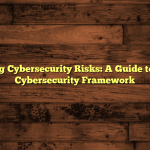Cybersecurity National Action Plans: A Nation’s Digital Shield
Table of Contents:
- What is a Cybersecurity National Action Plan?
- Key Goals of National Cybersecurity Plans
- How Do These Plans Work?
- Public–Private Partnerships Are Crucial
- International Cooperation: A Must-Have
- Examples From Recent Plans
- Why Does Having a National Action Plan Matter?
- Final Thoughts
- FAQ
Cybersecurity National Action Plans: A Nation’s Digital Shield
Is your country prepared for the next large-scale cyberattack? A Cybersecurity National Action Plan (CNAP) isn’t just a good idea – it is an essential blueprint. It provides a structured method, guided by the government, to improve a nation’s defense against digital threats. It commonly lays out strategic objectives, coordinated procedures, collaborative efforts among government bodies, business sectors, alongside global partners to safeguard vital systems as well as reduce risks in cyberspace.
What is a Cybersecurity National Action Plan?
A Cybersecurity National Action Plan is essentially a roadmap that is conceived by governments. Its design is to tackle the growing perils in the digital domain. It sets out clear targets for securing digital systems. These systems support everything from the nation’s defense to its economic stability coupled with its public services. The central idea is to establish a well-organized structure. Within it, various stakeholders, including government branches, private organizations, not to mention local authorities, work together effectively to counter cybersecurity risks. For example, the action plan of the Czech Republic from 2021 to 2025 emphasizes close cooperation. This is between authorities in the public sector along with other parties under their national cybersecurity law. This type of partnership makes certain that responsibilities are clearly delegated. At the same time, it leverages knowledge from all sectors.
Key Goals of National Cybersecurity Plans
Most CNAPs concentrate on some central targets:
- Preventing cyber attacks – This is done by fortifying defenses of important systems, such as electricity networks coupled with monetary infrastructures.
- Reducing vulnerabilities – This is achieved via advanced standards, adopting premier methods, as well as sharing threat intelligence in a timely manner.
- Improving resilience – In the event of attacks, systems recover quickly, with very little disruption.
- Promoting collaboration – This is done domestically among authorities but also abroad in partnership with allies.
The U.S., through its Cybersecurity & Infrastructure Security Agency (CISA), underscores these priorities in its planning papers. CISA’s method involves strengthening resilience inside the U.S. Furthermore, it includes defense of international infrastructures that America relies on. This recognizes how globally connected networks have become.
How Do These Plans Work?
A typical CNAP is broken down into feasible tasks. These are coordinated by certain departments or agencies with regulatory authority in a few locations. Let’s look at some examples:
- Establishing cybersecurity benchmarks grounded in research. This is from establishments like NIST (National Institute of Standards or Technology). It develops directives employed across many industries.
- Quickly sharing information about threats. This is done between government entities and private sector partners.
- Conducting periodic risk evaluations. These concentrate on infrastructures such as telecommunications and transport systems.
These assignments call for continuous supervision because cyber threats are always changing. This dynamic trait means strategies must be flexible, rather than set in stone.
Public–Private Partnerships Are Crucial
One constant concept throughout action plans nationwide is the emphasis on partnerships between the public and the private sector. The reason for this is because critical infrastructures are owned by private organizations, not the government. The result is that the success of any cybersecurity effort hinges on collaboration that takes place beyond official circles. These are some examples:
- Governments furnish frameworks when it comes to sharing information regarding emerging risks.
- Private companies put into practice technical defenses that align with these frameworks.
This teamwork supports building combined protection devices that are more robust than a single entity dealing with it alone.
International Cooperation: A Must-Have
Cyberattacks do not respect any borders. More often than not, they start overseas and exploit weaknesses in global systems. Realizing this has guided countries like the U.S. to prioritize working closely with partners across the globe. This is evident in CISA’s international strategic plan that was recently issued for activities from 2025 to 2026. What are the goals?
- Strengthening integrated cybersecurity defenses across the globe.
- Bringing together agency coordination around worldwide endeavors.
- Sharing time-sensitive threat details abroad.
This partnership enhances awareness on a global level. At the same time, it prevents failures from attacks on supply chains or shared technologies.
Examples From Recent Plans
Let’s look at some examples.
Czech Republic’s Approach (2021–2025)
Their action plan places a heavy emphasis on complying with Act No. 181/2014 Coll., which makes certain all related parties work together efficiently. Specific functions are delegated, so no overlapping occurs. Joint efforts are encouraged where it is needed. Take for example collaboration between ministries accountable for varying security elements. This is in order to meet the larger strategy goals.
United States’ Strategy via CISA
CISA’s strategy stresses lessening risks via proactive methods. This includes continuous monitoring of both physical also digital infrastructures. Their structure assists departments at the federal level. Furthermore, they extend direction to governments at state and local levels and private bodies who maintain essential services nationwide. Three aims are given a spotlight by them internationally: to boost resilience internationally where dependencies exist – fortify combined defenses – unify coordination within agencies handling relations abroad that deal with cybersecurity.
Role of NIST Standards
NIST takes on a needed part by creating standards based on consensus that are adopted by sectors throughout industry. Their directives assist organizations in grasping the premier method of securing their settings. This includes controls, going all the way up through sophisticated incident response methods. It lines up well with the ambitions at the national level found in CNAPs.
Why Does Having a National Action Plan Matter?
Without a complete plan:
- Efforts can become fragmented leading to gaps used by attackers.
- Response times might lag because of unclear responsibilities.
- Critical assets remain vulnerable without protection.
In contrast:
- A well-made CNAP supplies explanation as to who does what when facing incidents.
- Investment into proven security technologies is encouraged. This is guided by established standards.
- Recovery is facilitated more quickly that decreases economic/social impacts after breaches.
In short, it turns chaos into coordinated defense at scale.
Final Thoughts
Cybersecurity National Action Plans are very important blueprints guiding nations toward safer digital futures. This happens amid intensifying cyber risks on a global scale. They combine legal mandates, technical guidance that comes from professional bodies like NIST[3], operational governance that is issued by agencies like CISA[2][5], as well as partnerships spanning both the domestic industry all the way to global alliances. As tech continues to evolve rapidly, so do adversaries. These plans need continual updates that reflect new truths, promoting trust among players involved in defending cyberspace as a whole.
FAQ
What is the main goal of a Cybersecurity National Action Plan?
The main goal is to create a structured, government-led approach to improving a country’s cybersecurity posture. This involves setting strategic goals, coordinating actions, as well as fostering collaboration among public agencies, private sectors, not to mention international partners to safeguard vital infrastructure along with mitigating cyber risks.
Who is involved in implementing a CNAP?
A wide array of stakeholders are involved. This includes government bodies, private companies, local authorities, alongside international allies. The involvement of such a wide scope makes certain that responsibilities are clear, next to expertise from all sectors is leveraged.
How often should a CNAP be updated?
Because cyber threats are constantly evolving, a CNAP should be updated frequently. This is to reflect new realities and promote confidence among all the participants in defending cyberspace.
Resources & References:
- https://nukib.gov.cz/download/publications_en/strategy_action_plan/NSKB-AP_ENG.pdf
- https://www.cisa.gov/2025-2026-cisa-international-strategic-plan
- https://www.nist.gov/cybersecurity
- https://www.gsa.gov/governmentwide-initiatives/us-open-government/sixth-us-open-government-national-action-plan
- https://www.cisa.gov/sites/default/files/publications/cyberspace_strategy.pdf





